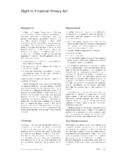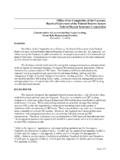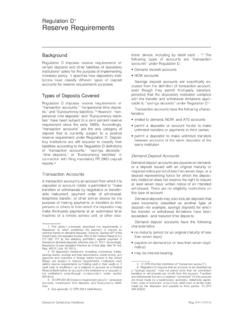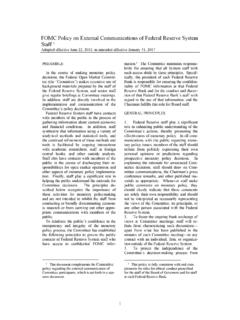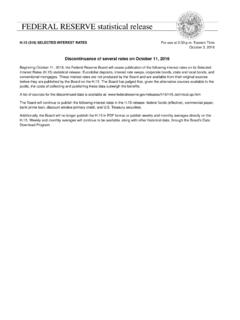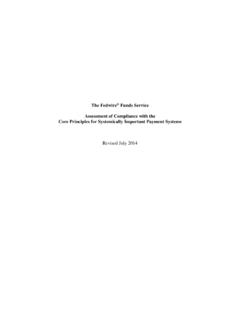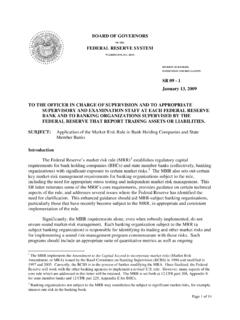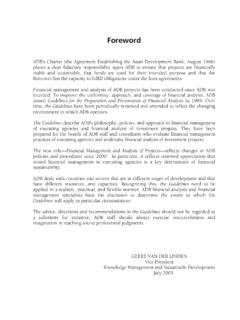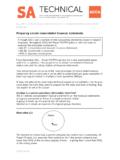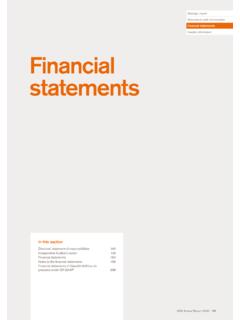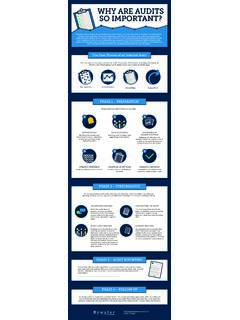Transcription of For release on delivery 1:30 p.m. EST February 18, 2022 ...
1 For release on delivery 1:30 EST. February 18, 2022. preparing for the financial System of the Future Remarks by Lael Brainard Member Board of Governors of the Federal Reserve System at the 2022 US Monetary Policy Forum New York, NY. February 18, 2022. The financial system is undergoing fast-moving changes associated with digitalization and decentralization. Some of these innovations hold considerable promise to reduce transaction costs and frictions, increase competition, and improve financial inclusion, but there are also potential risks. With technology driving profound change, it is important we prepare for the financial system of the future and not limit our thinking to the financial system of today.
2 1. The Evolving Digitalization and Decentralization of Finance In recent years, there has been explosive growth in the development and adoption of new digital assets that leverage distributed ledger technologies and cryptography. The market capitalization of cryptocurrencies grew from less than $100 billion five years ago to a high of almost $3 trillion in November 2021 and is currently around $2 trillion. 2. In parallel, we have seen rapid growth in the platforms that facilitate the crypto finance ecosystem, including decentralized finance (DeFi) platforms. These crypto platforms facilitate a variety of activities, including lending, trading, and custodying crypto-assets, in some cases outside the traditional regulatory guardrails for investor and consumer protection, market integrity, and transparency.
3 The growth in the crypto finance ecosystem is fueling demand for stablecoins . digital assets that are intended to maintain stable value relative to reference assets, such as the dollar. Stablecoin supply grew nearly sixfold in 2021, from roughly $29. billion in January 2021 to $165 billion in January 2022. There is a high degree of 1. I am grateful to Alexandra Fernandez, Lacy Douglas, David Mills, Sonja Danburg, and David Pope of the Federal Reserve Board for their assistance in preparing this text. These views are my own and do not necessarily reflect those of the Federal Reserve Board or the Federal Open Market Committee. 2. CoinMarketCap, Total Cryptocurrency Market Cap, last modified on February 16, 2022, -2- concentration among a few dollar-pegged stablecoins: As of January 2022, the largest stablecoin by market capitalization made up almost half of the market, and the four largest stablecoins together made up almost 90 percent.
4 3 Today, stablecoins are being used as collateral on DeFi and other crypto platforms, as well as in facilitating trading and monetization of cryptocurrency positions on and between crypto and other platforms. In the future, some issuers envision that stablecoins will also have an expanded reach in the payment system and be commonly used for everyday transactions, both domestic and cross-border. So it is important to have strong frameworks for the quality and sufficiency of reserves and risk management and governance. As noted in a recent report on stablecoins by the President's Working Group on financial Markets, it is important to guard against run risk, whereby the prospect of an issuer not being able to promptly and adequately meet redemption requests for the stablecoin at par could result in a sudden surge in redemption demand.
5 4 It is also important to address settlement risk, whereby funds settlement is not certain and final when expected, and systemic risk, whereby the failure or distress of a stablecoin provider could adversely affect the broader financial system. 5. 3. Total Stablecoin Supply, The Block, last modified on February 14, 2022, 4. President's Working Group on financial Markets, the Federal Deposit Insurance Corporation, and the Office of the Comptroller of the Currency, Report on Stablecoins (Washington: President's Working Group on financial Markets, the Federal Deposit Insurance Corporation, and the Office of the Comptroller of the Currency, November 2021), 5. See Virtual Hearing - Digital Assets and the Future of Finance: The President's Working Group on financial Markets' Report on Stablecoins, February 8, 2022, -3- The prominence of crypto advertisements during the Super Bowl highlighted the growing engagement of retail investors in the crypto ecosystem.
6 6 In late 2021, Pew Research found that 16 percent of survey respondents reported having personally invested in, traded, or otherwise used a cryptocurrency up from less than 1 percent of respondents in 2015. 7 There is also rising interest among institutional investors. 8 So it is perhaps not surprising that established financial intermediaries are undertaking efforts to expand the crypto services and products they offer. If the past year is any guide, the crypto financial system is likely to continue to grow and evolve in ways that increase interconnectedness with the traditional financial system. As a result, officials in many countries are undertaking efforts to understand and adapt to the transformation of the financial system.
7 Many jurisdictions are making efforts to ensure statutory and regulatory frameworks apply like rules to like risks, and some jurisdictions are issuing or contemplating issuing central bank currency in digital form. 9. 6. Khristopher Brooks and Aimee Picchi, Super Bowl ads 2022: Crypto companies are spending millions to win over viewers, CBS News, February 11, 2022, commercials-cryptocurrency/. 7. The 2015 survey focused on Bitcoin use. See 16% of Americans say they have ever invested in, traded or used cryptocurrency, Pew Research Center, last modified on November 11, 2021, traded-or-used-cryptocurrency/. 8. Fidelity Digital Assets, 71% of Institutional Investors Plan to Buy or Invest in Digital Assets in the Fugure, July 20, 2021, public/060_www_fidelity_com/documents/ 9.
8 See financial Stability Board, Regulation, Supervision and Oversight of Global Stablecoin . Arrangements: Final Report and High-Level Recommendations (Basel: financial Stability Board, October 2020), and International Monetary Fund, Behind the Scenes of Central Bank Digital Currency (Washington: International Monetary Fund, February 2022), Digital-Currency-512174. -4- preparing for the Payment System of the Future The Federal Reserve needs to be preparing for the payment landscape of the future even as we continue to make improvements to meet today's needs. In light of the rapid digitalization of the financial system, the Federal Reserve has been thinking critically about whether there is a role for a potential central bank digital currency (CBDC) in the digital payment landscape of the future and about its potential properties, costs, and benefits.
9 Our financial and payment system delivers important benefits today and is continuing to improve with developments like real-time payments. Nonetheless, certain challenges remain, such as a lack of access to digital banking and payment services for some Americans and expensive and slow cross-border payments. Growing interest in the digital financial ecosystem suggests that technology is enabling potential improvements that merit consideration. 10 In addition, it is important to consider how new forms of crypto-assets and digital money may affect the Federal Reserve's responsibilities to maintain financial stability, a safe and efficient payment system, household and business access to safe central bank money, and maximum employment and price stability.
10 It is prudent to explore whether there is a role for a CBDC to preserve some of the safe and effective elements of the financial system of the present in a way that is complementary to the private sector innovations transforming the financial landscape of the future. The public and private sector play important complementary roles within the financial system in the United States. From Fedwire to FedNow, the Federal Reserve has 10. Lael Brainard The Future of Retail Payments in the United States (speech at the FedNow Service Webinar, Washington, , August 6, 2020), -5- over a century of experience working to improve the infrastructure of the payment system to provide a resilient and adaptable foundation for dynamic private sector activity.
